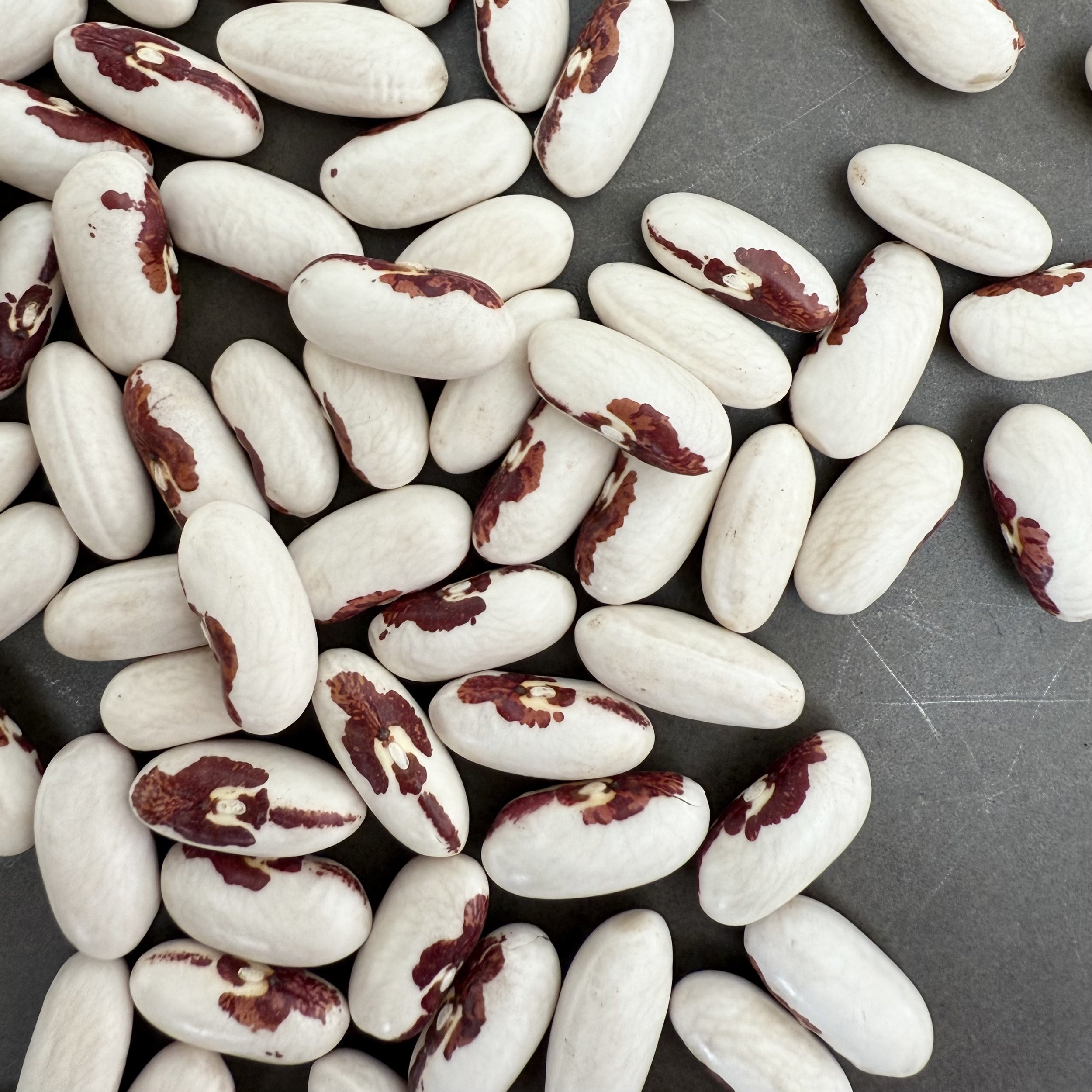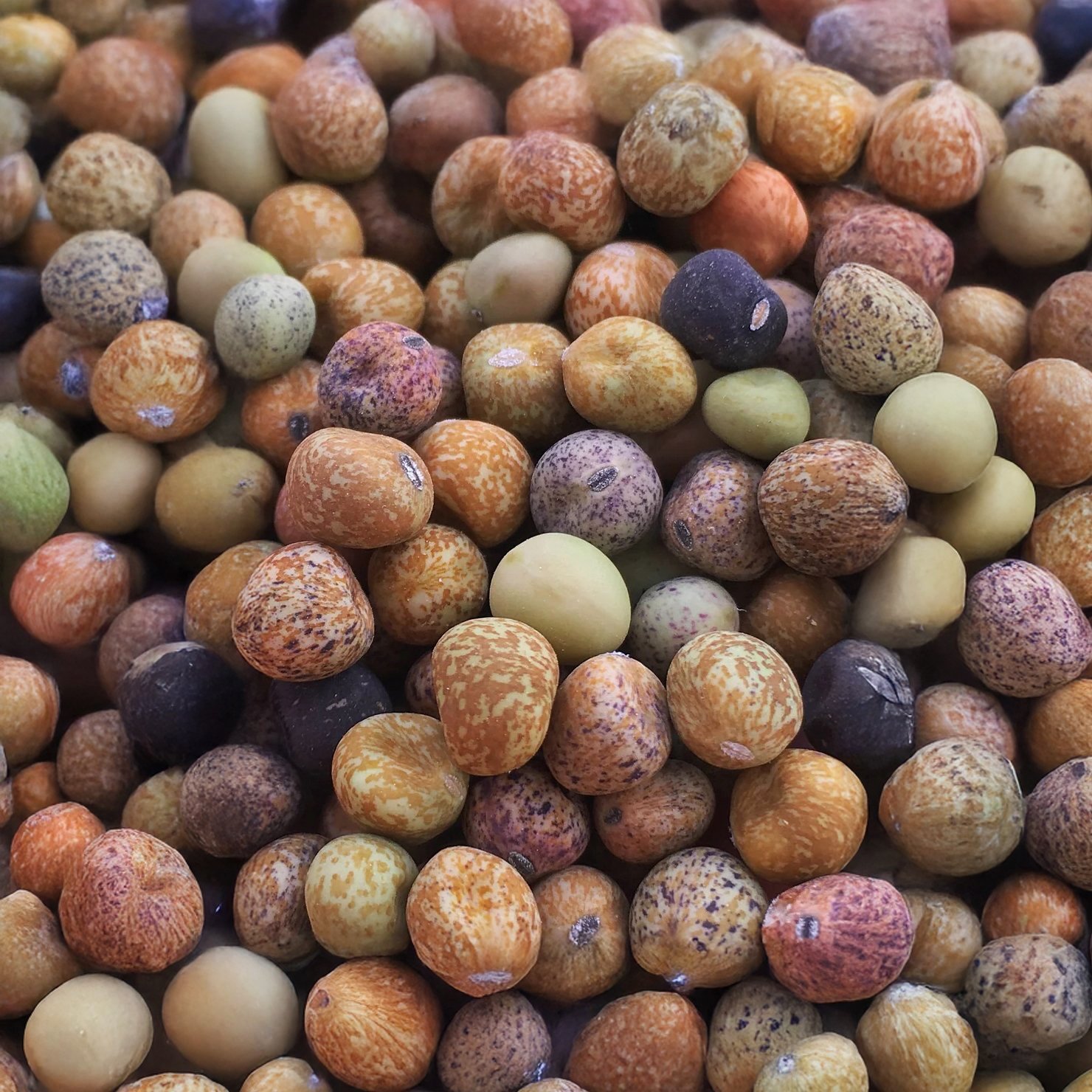 Image 1 of 1
Image 1 of 1


Flower, Bells of Ireland
Product Description:(Moluccella laevis) Your eyes aren’t playing tricks on you… These blossoms are green!
Carl Linnaeus himself first described this wildflower in 1753, but incorrectly assumed that it hailed from the Spice Islands of Indonesia. In truth, Bells of Ireland is a member of the mint family native to the Eastern Mediterranean and was known to European growers as early as 1570, when it was introduced from Syria. The strong vanilla-like fragrance of its blossoms likely caught the attention of the burgeoning perfume industry at the time, but today it is most commonly used by florists for its ability to hold up well as a cut or dried flower.
The earliest mention of this flower in the United States that we could find was in 1867, where it was referred to as “Molluca Balm” or “Shell Flower”. Its modern name first appeared in 1942, when two seed companies (Bodger’s and Vaughn’s) both listed it as “Bells of Ireland” in their catalogs. This new name soon took on a life of its own, eventually becoming a mainstay of St. Patrick’s Day celebrations and wedding bouquets for its unique color. Grows up to 3 feet in height. Open-pollinated. 150 seeds per packet.
Growing Information: Wrap seeds in a moist paper towel and cold-stratify in the refrigerator for 1-2 weeks. Start indoors, sowing seeds just below the soil surface, 6-8 weeks before your expected last frost. Transplant outdoors after all risk of frost has passed. Or sow outdoors while light frosts are still expected to occur. 100 days to maturity.
How To Save Bells Of Ireland Seeds
Bells of Ireland seeds develop in a similar manner to basil or lemon balm. When the flowers have thoroughly dried, peel back the calyxes to reveal the small seeds in the center. After collecting, dry the seeds down once more and store in a cool, dry location until needed.
Product Description:(Moluccella laevis) Your eyes aren’t playing tricks on you… These blossoms are green!
Carl Linnaeus himself first described this wildflower in 1753, but incorrectly assumed that it hailed from the Spice Islands of Indonesia. In truth, Bells of Ireland is a member of the mint family native to the Eastern Mediterranean and was known to European growers as early as 1570, when it was introduced from Syria. The strong vanilla-like fragrance of its blossoms likely caught the attention of the burgeoning perfume industry at the time, but today it is most commonly used by florists for its ability to hold up well as a cut or dried flower.
The earliest mention of this flower in the United States that we could find was in 1867, where it was referred to as “Molluca Balm” or “Shell Flower”. Its modern name first appeared in 1942, when two seed companies (Bodger’s and Vaughn’s) both listed it as “Bells of Ireland” in their catalogs. This new name soon took on a life of its own, eventually becoming a mainstay of St. Patrick’s Day celebrations and wedding bouquets for its unique color. Grows up to 3 feet in height. Open-pollinated. 150 seeds per packet.
Growing Information: Wrap seeds in a moist paper towel and cold-stratify in the refrigerator for 1-2 weeks. Start indoors, sowing seeds just below the soil surface, 6-8 weeks before your expected last frost. Transplant outdoors after all risk of frost has passed. Or sow outdoors while light frosts are still expected to occur. 100 days to maturity.
How To Save Bells Of Ireland Seeds
Bells of Ireland seeds develop in a similar manner to basil or lemon balm. When the flowers have thoroughly dried, peel back the calyxes to reveal the small seeds in the center. After collecting, dry the seeds down once more and store in a cool, dry location until needed.





